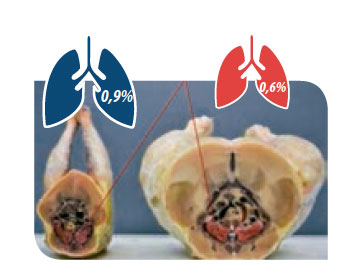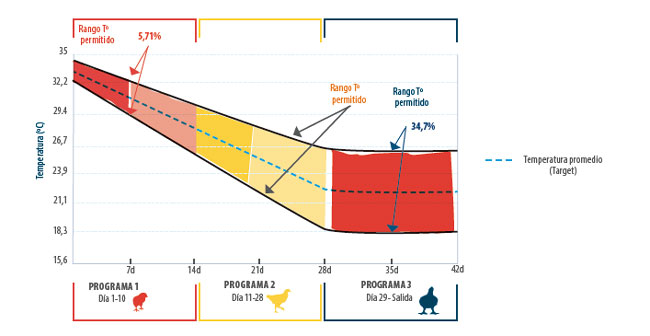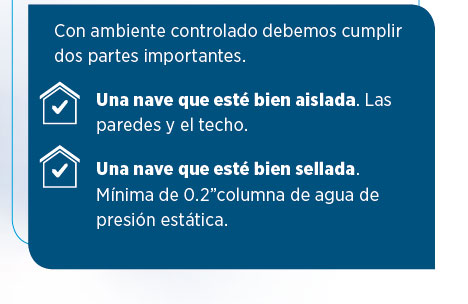Management & Welfare
Environmental control to increase poultry farm efficiency
To read more content about aviNews 2019 ENG
Management & Welfare
To read more content about aviNews 2019 ENG
Content available at:
Español (Spanish)
When we think of broilers in a controlled environment, we must assess two ages:
Current bird lineages are a product of the work of genetic companies and they increasingly require more restricted temperature ranges for optimal development. This invites us to see the controlled environment as a complement to the efforts of genetic companies.
This gain in size also implies other requirements such as maintaining the temperature, humidity and other factors within very narrow ranges to achieve maximum performance.
Figure 1. Evolution of lung size with the years. Notice how the size of the lungs has evolved with genetic advances. Before it represented 0.9% of the bird while in the current lines it represents only 0.6%.
It is important to develop different environmental control programs for different ages and climates, since the environmental needs of the animals change. In addition, companies must standardize computer programs inside houses, in order to avoid interference that leads to handling problems.

Figure 2. Chicken age programs and outdoor environment for Ross 308 chickens.

PROGRAM 2: Growing

Comparing environments

Figure 3. Evolution of the temperature in a commercial layer house without a controlled environment.
In a test carried out in a cage for commercial layers, we see the temperature changes throughout the day (24 hours) in a shed without a controlled environment. Only for a very short period of the day the desired temperature was reached. In the 24-hour days there were only 8 hours when I found myself inside the neutral zone.
In Figure 4, in a controlled environment shed, we observe how the outside temperature fluctuates while the internal temperature remains within the desired range that the bird needs.

Figure 4. Comparison of the temperature inside and outside the house. Observe how the range is maintained.
But all that would not be possible without having a shed that’s built in the right way.
That means that we must have insulating material in the ceilings and walls. On the ceiling the “R” value must be between 15-19. Nowadays with the infrared cameras it is easier to find the environmental problems of the houses.
So if there is not so much heat input from the house’s construction, we could only work on the heat generated by the birds. On many occasions we are over-ventilating the chicks because of construction problems and not because of the actual heat felt by the birds.
When the chicken is already large, we must eliminate the heat that the bird itself generates. If we do not remove that excess heat due to lack of ventilation, the daily gain of the chickens will decrease. So nowadays, it is better to work with speeds of 3.5-4 m / s.
The second important part for large chickens are evaporative panels. We know that when there is humidity above 80% outside the building, evaporative panels are not very useful. A common problem with evaporative panels is their maintenance, due to the poor quality of the water or the hardness of the water running through them. When the RH outside the warehouse is less than 60%, the evaporative panels can lower the temperatures in the warehouse by 8 to 10ºC. At this point, we must remember the temperature-humidity binomial. When the temperature rises, the humidity drops and therefore during the day due to an increase in the temperature the humidity is lower, which makes it more advisable to use panels.
To put all that in more practical terms, the list below could serve as a guide for Rules of Controlled Environment